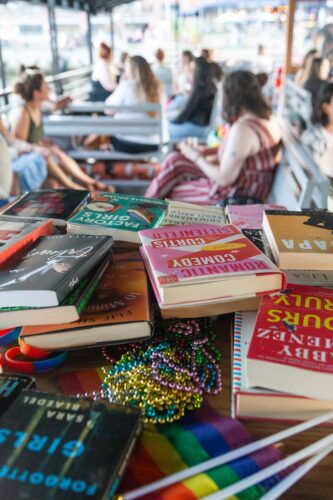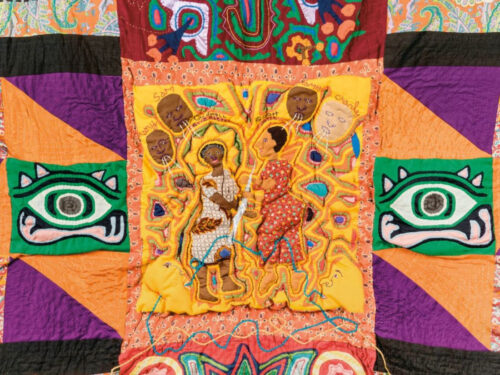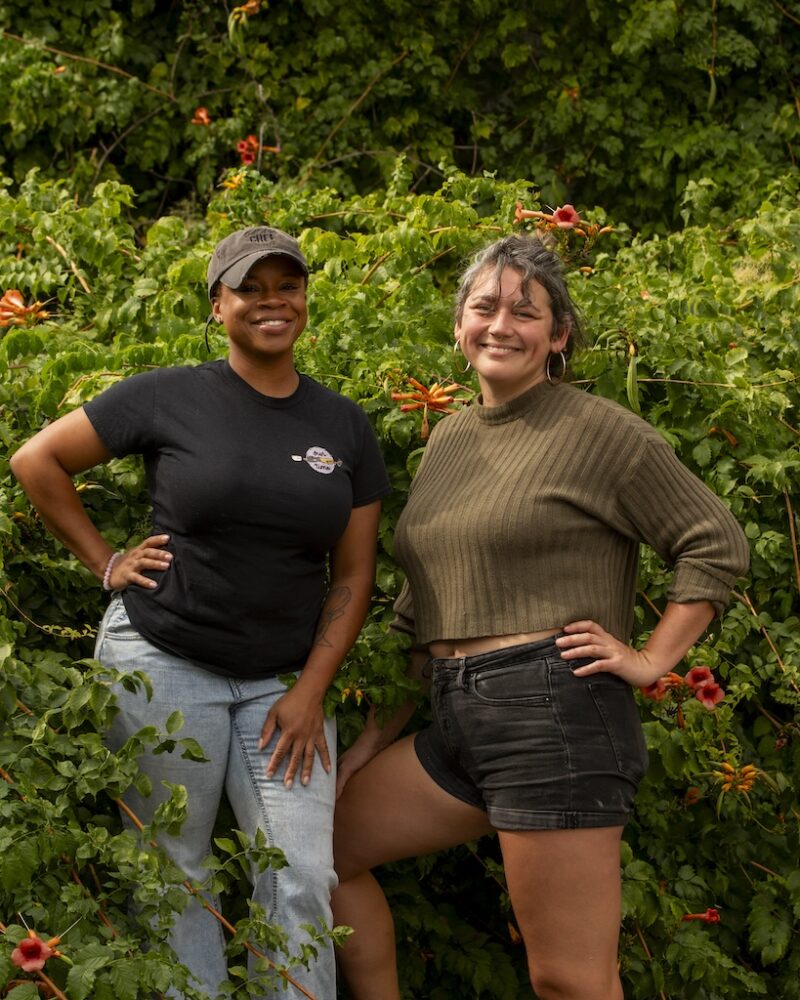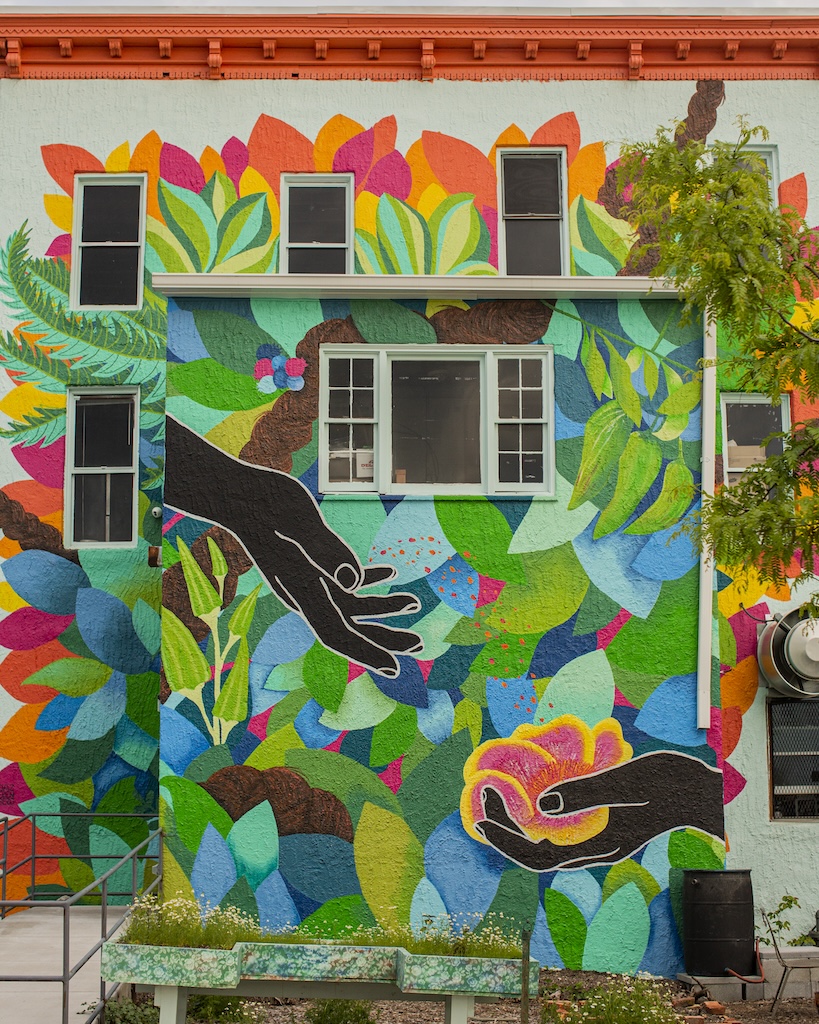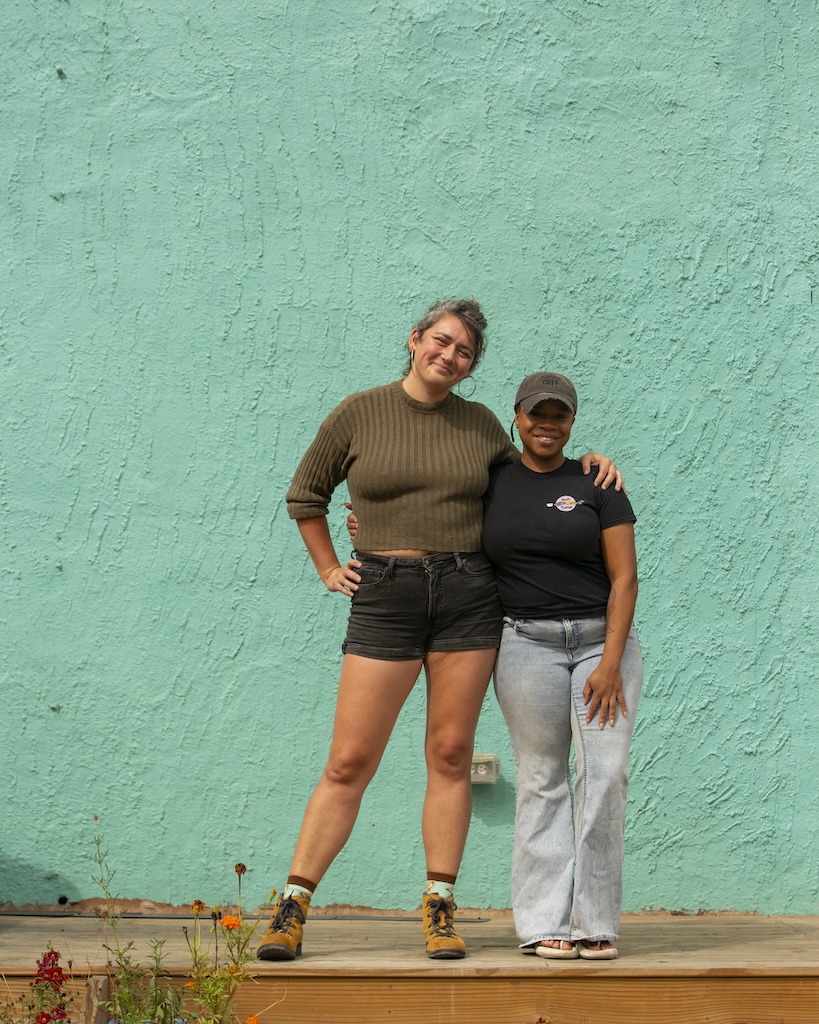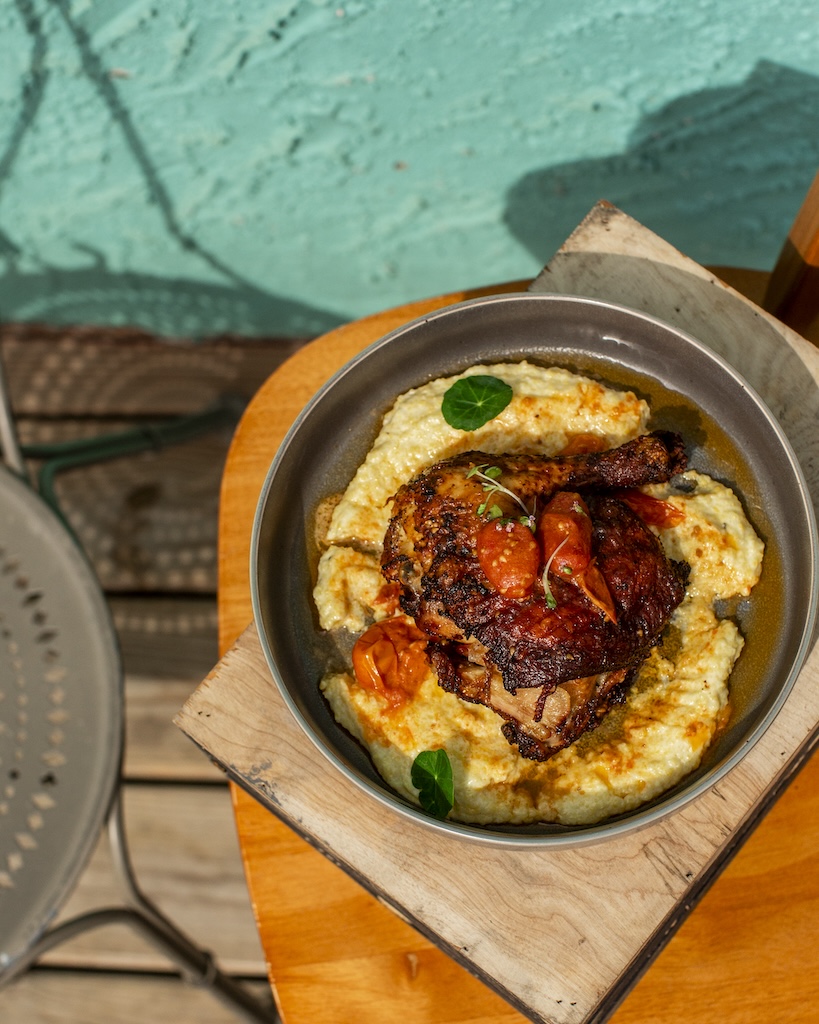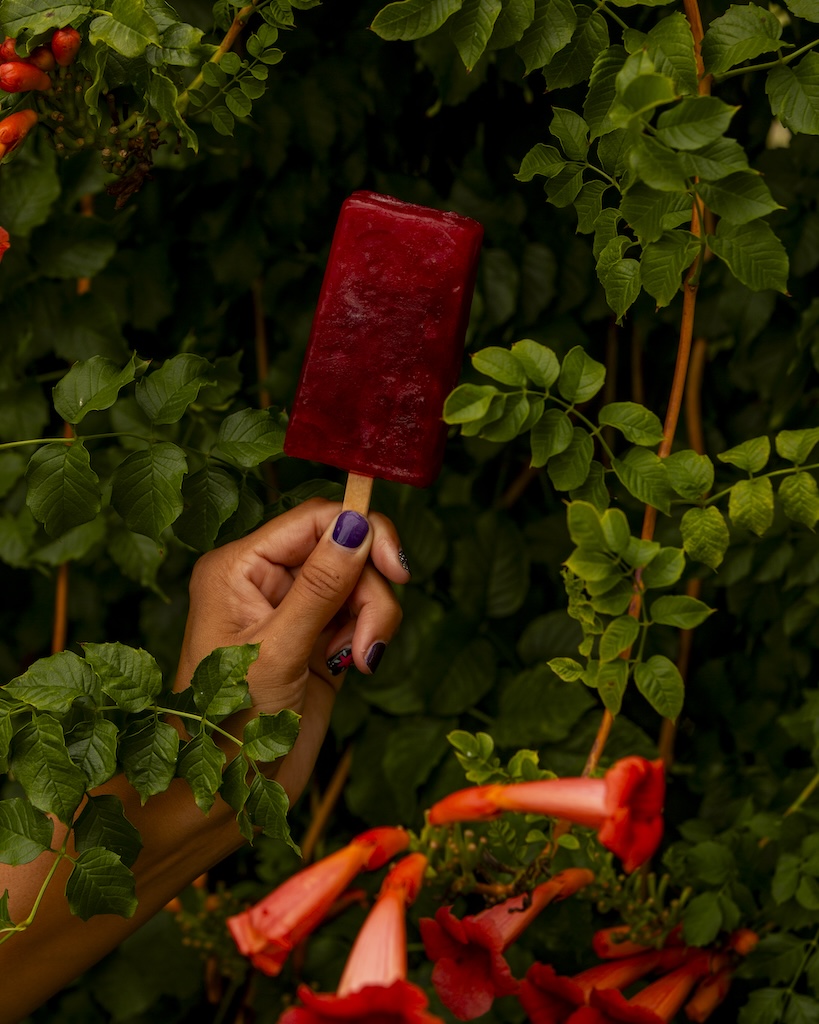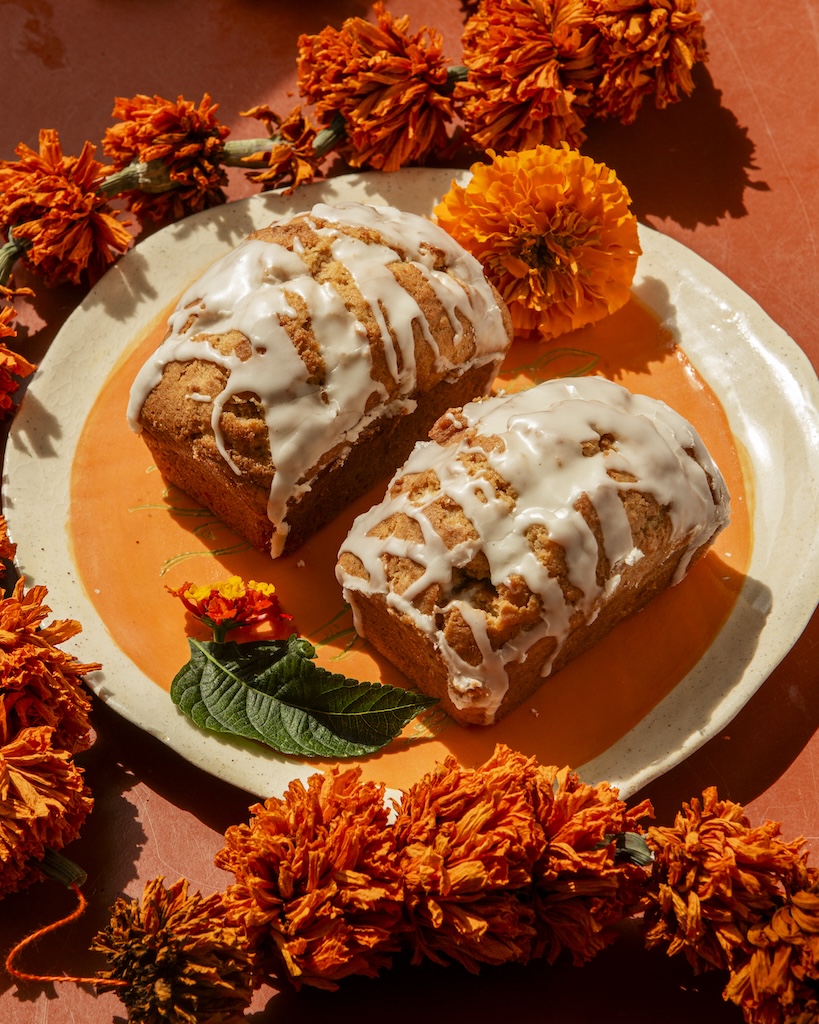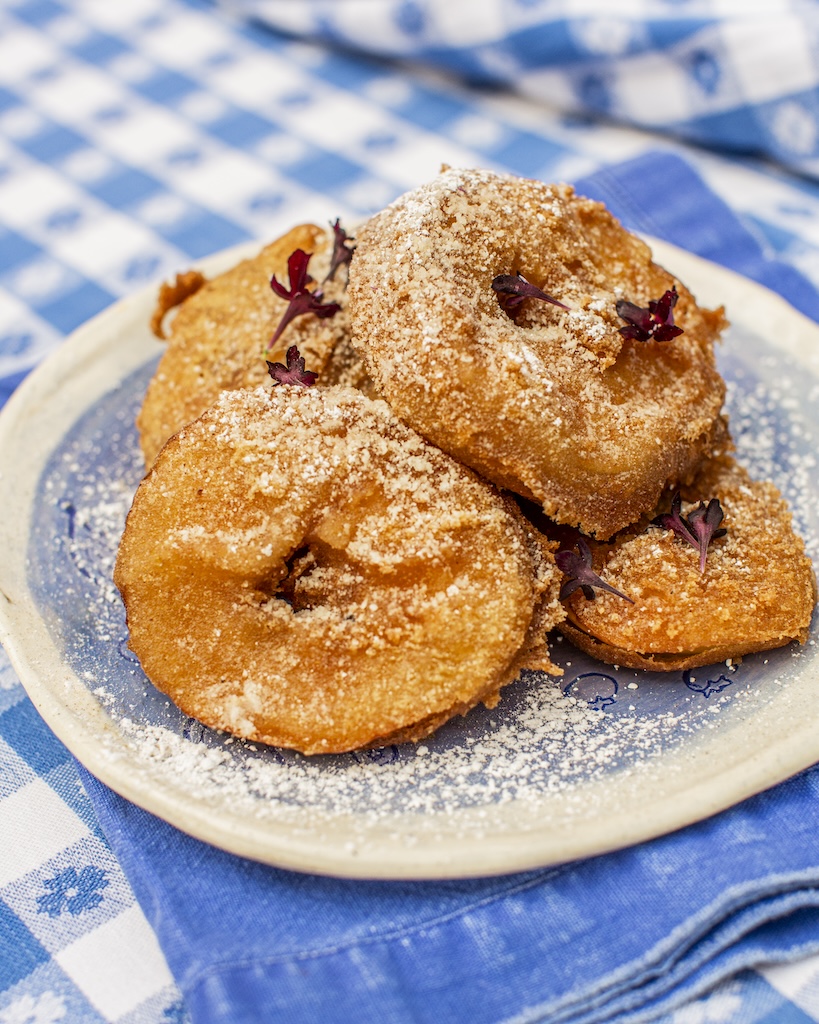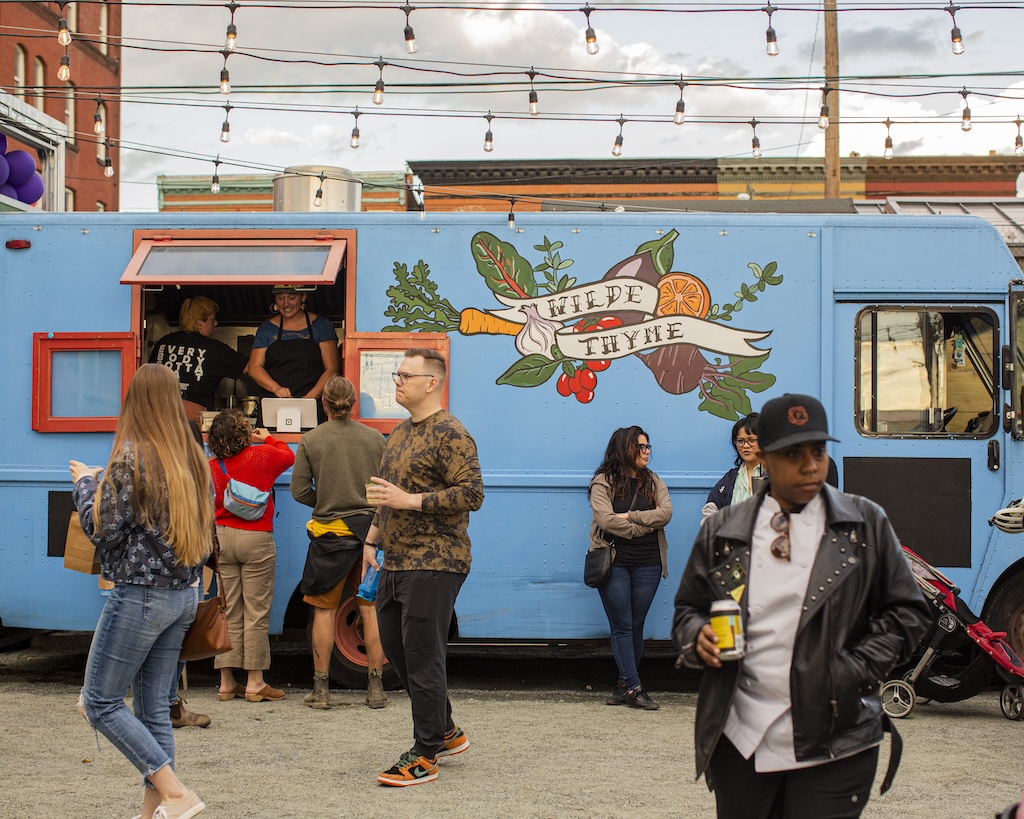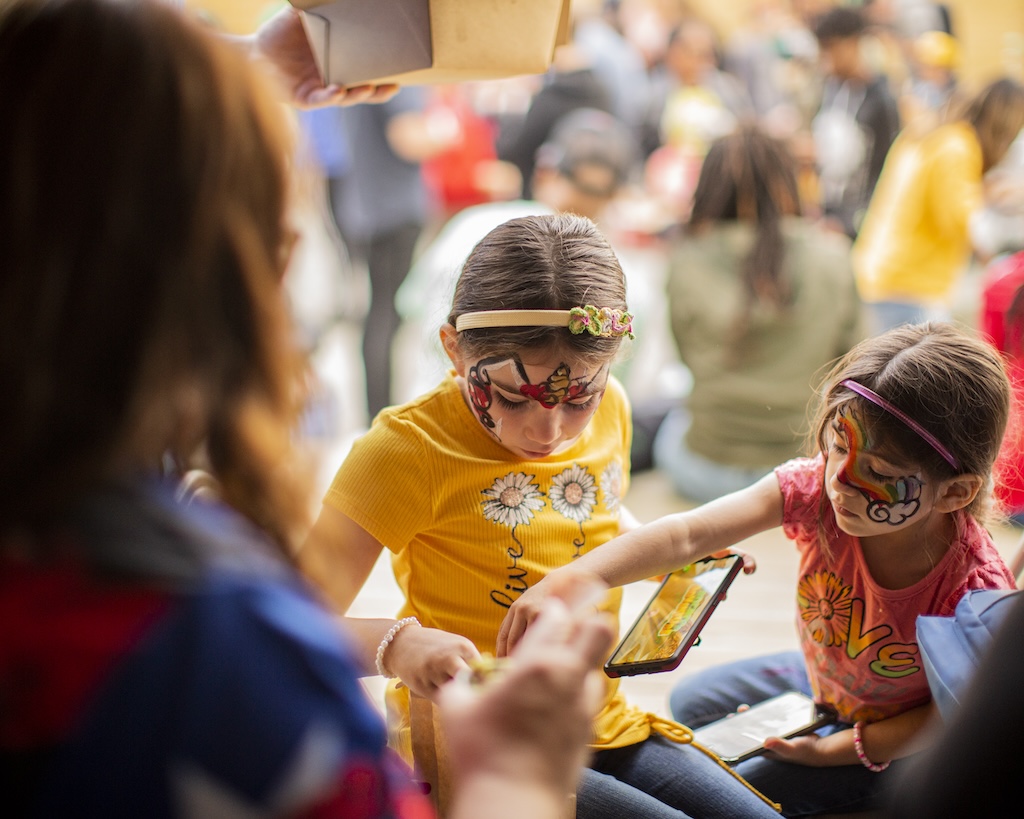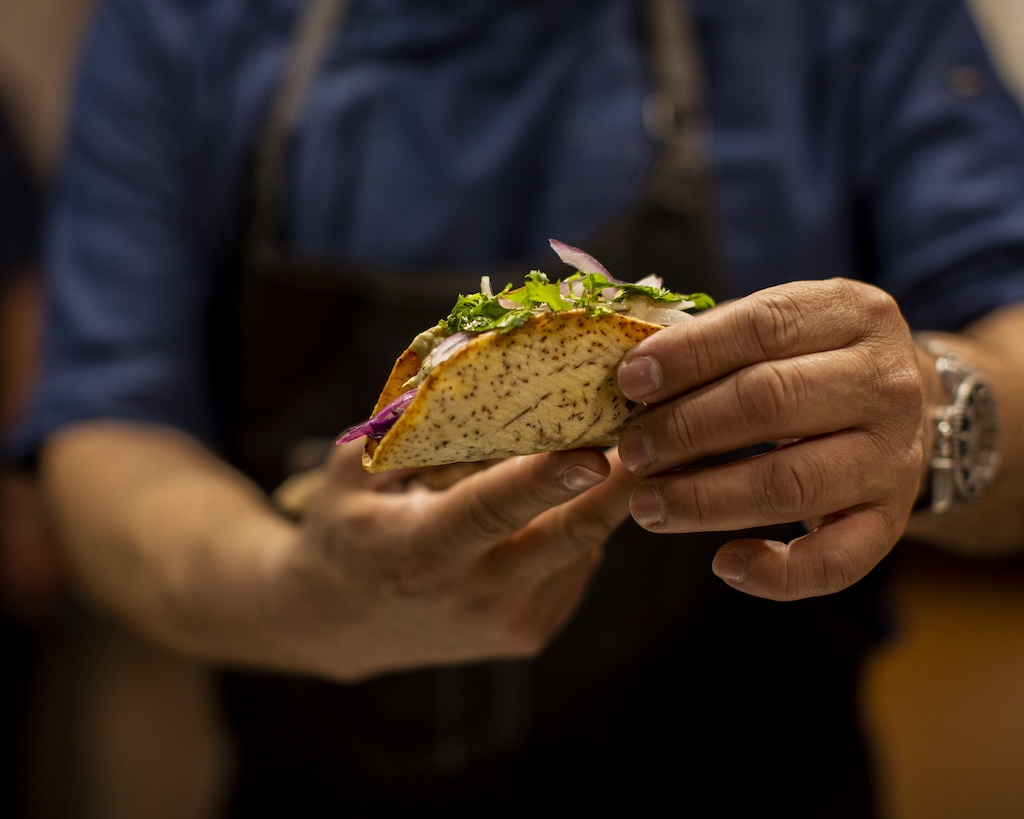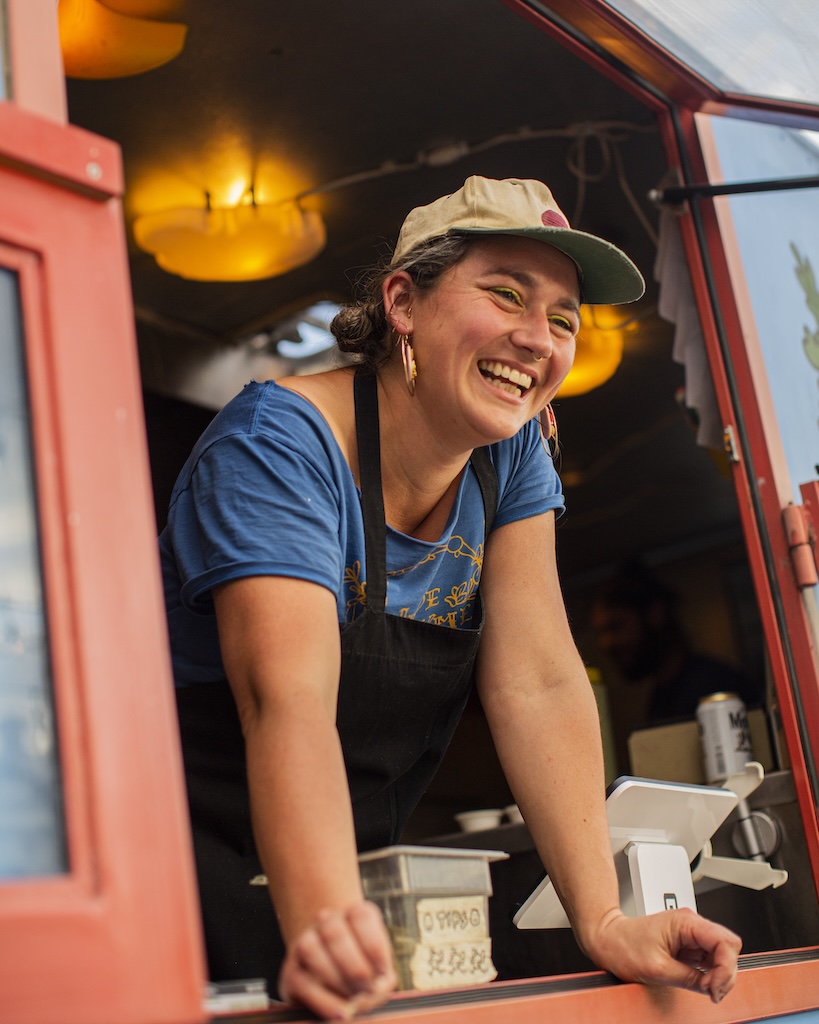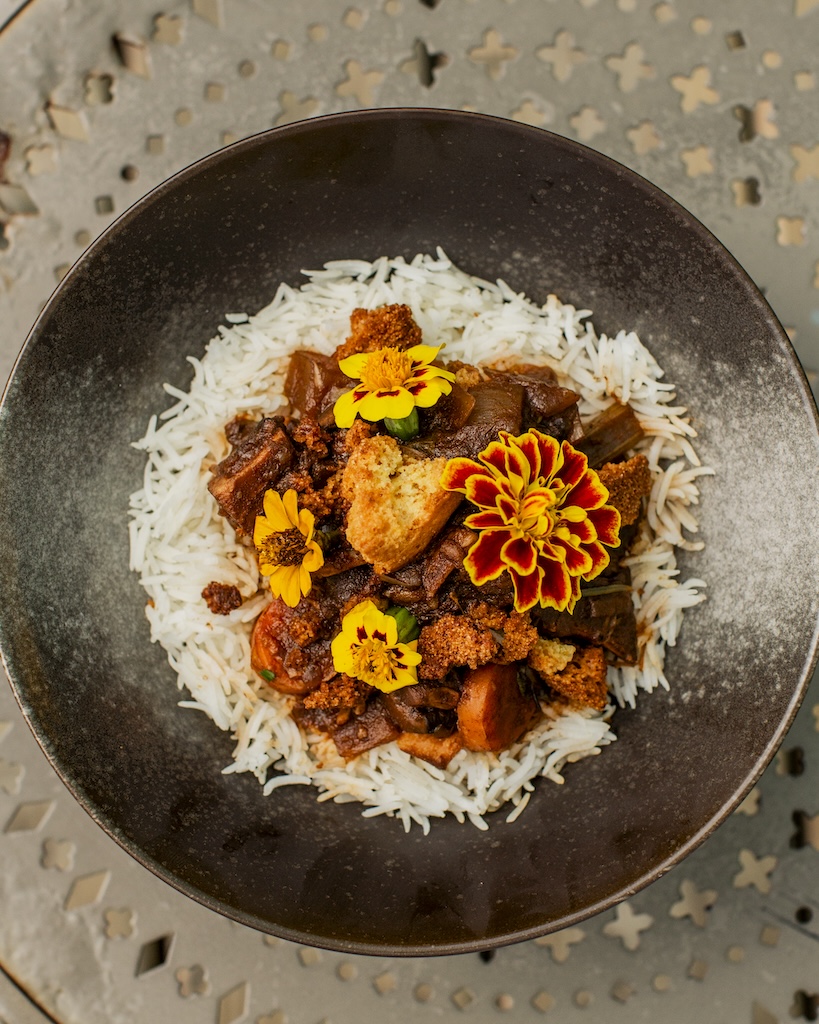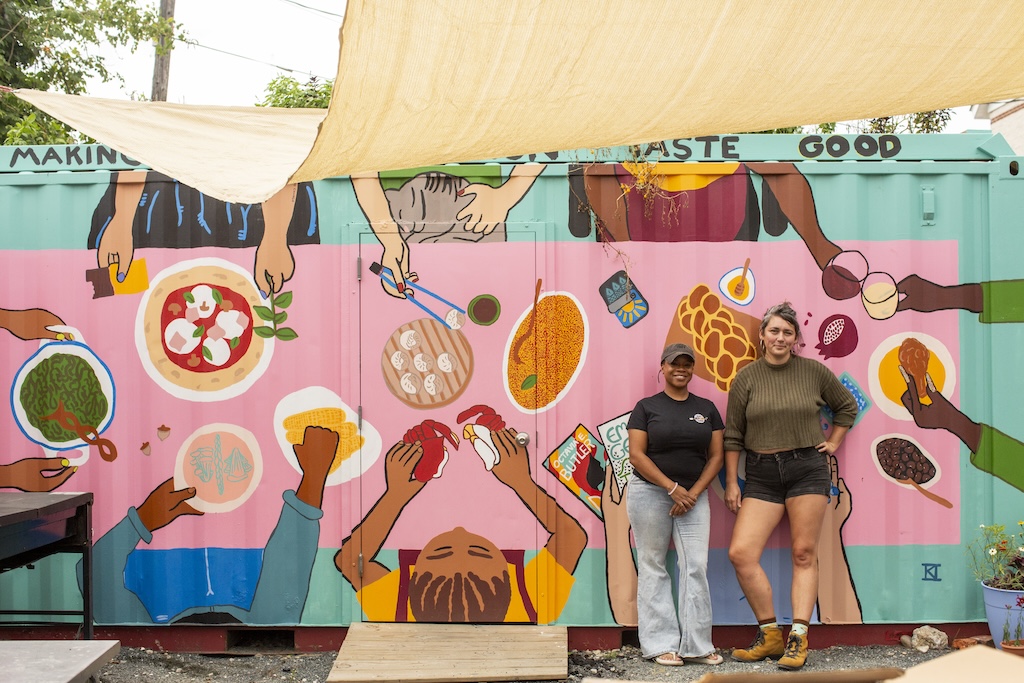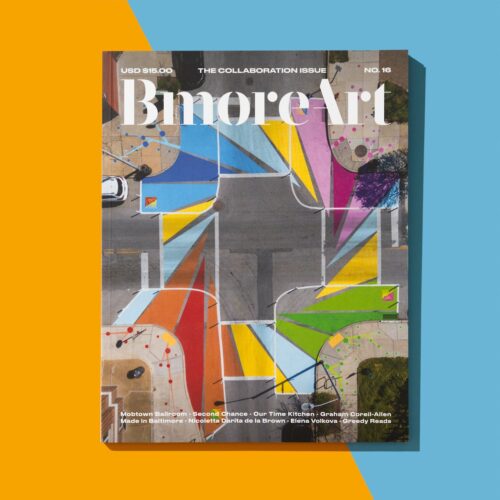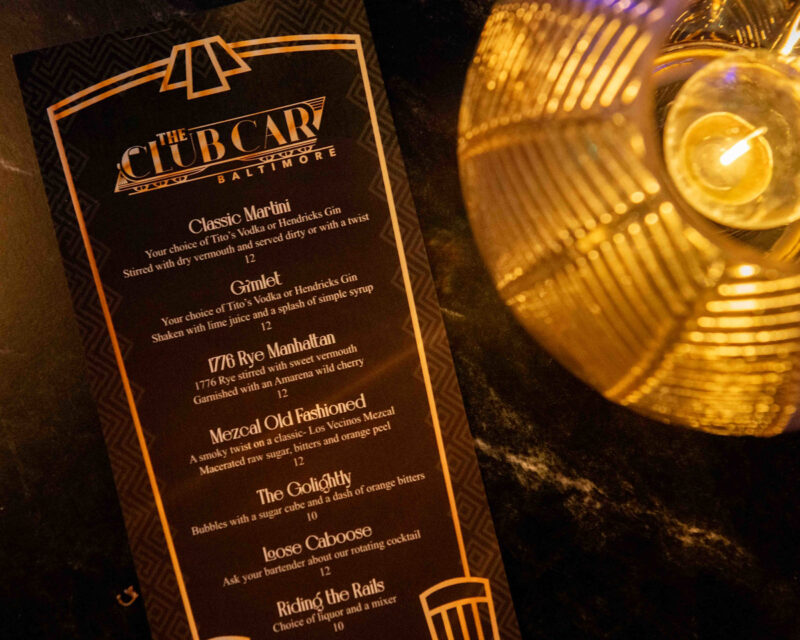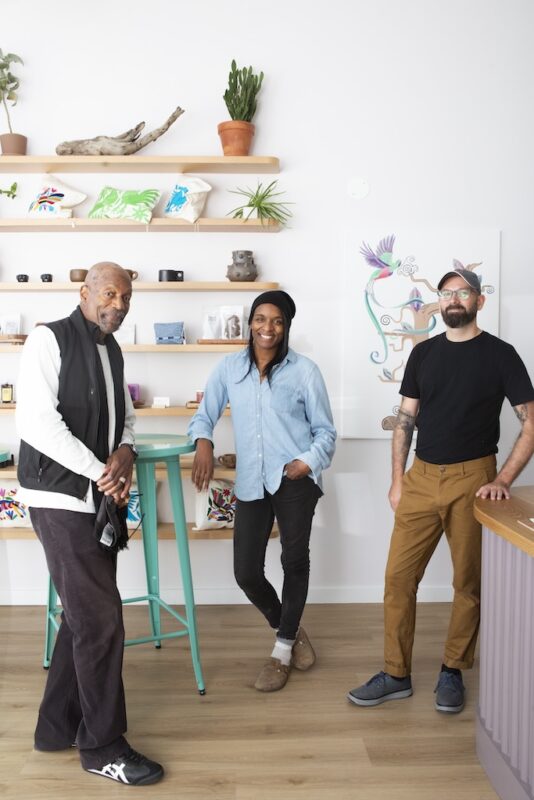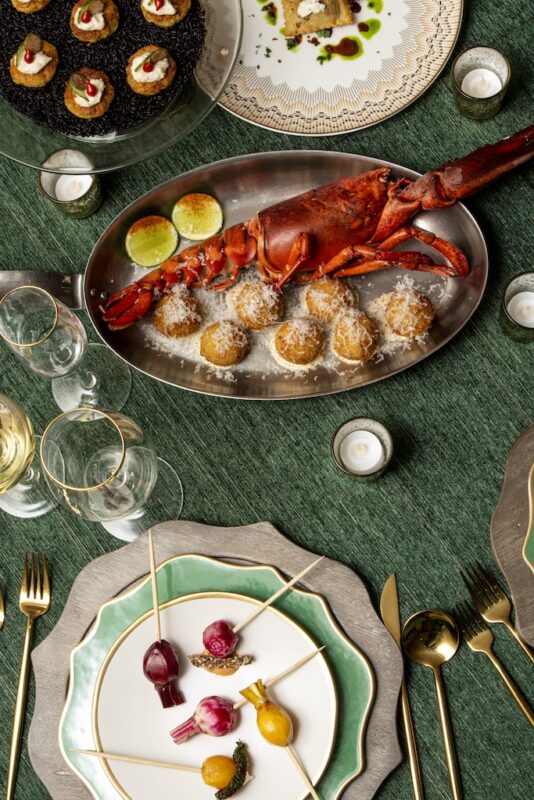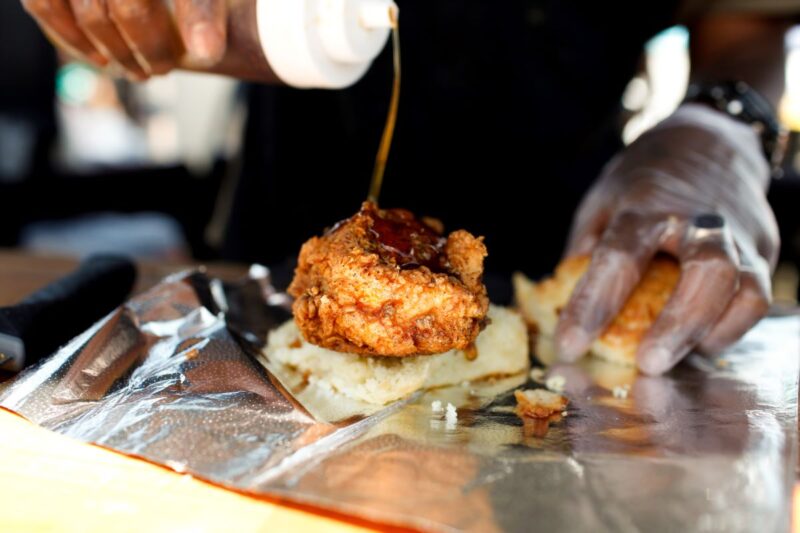Chef Catina Smith’s Challah French Toast with bruleéd bananas, toasted walnuts, streusel cajeta, and maple syrup is a choir of delightful harmony, served at a spring brunch pop-up at Our Time Kitchen.
My senses are activated and overwhelmed by each perfect note: the dense yet airy crumb of the challah bread; slices of bruleéd bananas warmed in aromatics and glazed in a bath of butter and sugar; and then, amidst the softness, the crunch of a tree nut releasing its bitter and earthy notes into the sweetness. Finally, the cajeta—a goat milk dulce de leche—releases layers of flavor. It’s rich but vibrant and tart, like licking caramel from a gold spoon. The tanginess of the goat milk penetrates through at the exact moment saltiness from the challah releases on my palate, and suddenly, I feel it. Tears well in my eyes. It’s the perfect bite.
Drive south on Howard Street, and the colorful exterior of Our Time Kitchen, Baltimore’s newest ghost kitchen, stands out amongst its neighbors. The spirited botanical mural, created in collaboration with the community by AfroLatina artist Jaz Erenberg, features hands planting seeds and a long sigmoid braid curling along the wall. “It’s inspired by the resilience of Black people that were forcibly enslaved and brought to the US, braiding seeds in their hair and planting those seeds as a way to survive,” explains co-founder Chef Kiah Gibian. “Braids have an essence of femininity,” she says. “It was important for us to get the mural up fast, so it’s a talking point,” adds Chef Cat.
No other aesthetic design achieves that goal quite like a large-scale mural. Murals are unique in their collaborative nature, a form of public art that captures so many points of view at once. It is a combination of what an artist feels, what a community wants to see, and what civic officials or private property owners are willing to fund. Baltimore Mural Program, a BOPA initiative, has helped produce more than 250 murals in the city since 1975 in an effort to beautify neighborhoods. The Maryland State Arts Council funded Our Time Kitchen’s mural. No matter how they come to be, murals disrupt everyday reality and beg passersby to stop and ponder; to ask for and seek meaning.
Just underneath the vibrant mural, onlookers will find a well-stocked herbal garden full of medicinal herbs available to the community to take from as needed. Inspired by her work as a doula and her love of foraging, Chef Kiah explains the herb garden is a way to showcase what plants and foods can be used as medicine. There’s a garden bed focused on gut health, a bed focused on nerve support and sleeping—so people can heal themselves. Each bed is set up to relieve a specific sickness.
